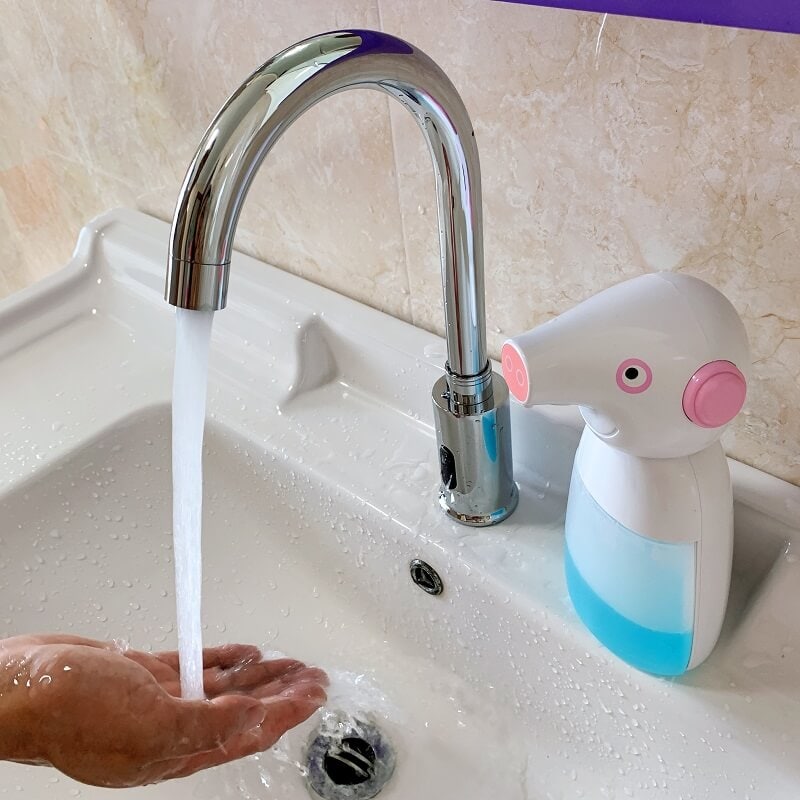
Touchless faucets are also called automatic faucets, sensor faucets, sensor taps. Touchless faucets are widely used in our life. You can see them everywhere in the public washrooms. Such as in the shopping malls, restaurants, hotels, cinemas, airports, train stations and so on. The reason why touchless faucets are so widely used is that they are so convenient to use. They don’t allow to touch the faucet body. They are kind to the patient, kids, and the old.
Touchless faucets are hygienic and germs free because they are totally touch free. It can avoid viruses or germs spreading in the kitchen, bathrooms, washrooms, and so on.
DO TOUCHLESS FAUCETS NEED ELECTRICITY?
Since touchless faucets have so many functions, people are always asking this question. The answer is definitely yes.
Touchless faucets need electricity because it’s key spare parts, the motion sensors, the solenoid valves all need electricity to work. The KEGE touchless faucets are in a low power consumption design. Below we will introduce simply how touchless faucets work.
- There are always two LEDs in the motion sensor which we call infrared LED. One LED emits infrared beams, another receives infrared beams. When people come near the sensor, the infrared beams from the emitted LED to reflect the receiver LED. It gives a signal to the motion sensor control IC and it delivers the signal to the solenoid valve. It needs electricity to keep the LED, IC, and control board working.
- The solenoid valve which we also call them electromagnetic valve. When it receive the signal from the IC or sensor, it controls the water open and close.
Below we would like to introduce more on these key spare parts.
Which spare parts in the touchless faucets need electricity?
Generally, it’s the motion sensor and solenoid valve in the touchless faucets that need electricity to work. Below we would like to introduce you to more details.
MOTION SENSOR
As the most important part, the work of the sensor is to forward the signals to the valve to turn on the water after detecting your hand. Its job is to inform the valve when to start or stop the water flow based on the presence or absence of your hands or objects movements. In most cases, infrared lights sensors are often placed at the tip of the spout or under the bott
Active infrared sensors use the emission and reception of infrared beams to detect the presence and/or movement of objects or people in their field of detection. There are always two LEDs in the motion sensor which we call infrared LED. One LED emits infrared beams, another receives infrared beams. When people come near the sensor, the infrared beams from the emitted LED to reflect the receiver LED. It gives a signal to the motion sensor control IC and it delivers the signal to the solenoid valve.
The LEDs flash, emits, and receive infrared beams that need electricity. The IC controls signal transfer and the whole circuit working need electricity. However all these.
The infrared sensors are at low power consumption. The infrared motion sensor life span reaches to 500,000 circles, lasting 10 years.
Solenoid valve
The solenoid valve is also called the electromagnetic valve or magnetic valve. It’s an electrical valve using electromagnetics. How a solenoid valve works is by controlling the flow of liquids or gases in a positive, fully-closed or fully-open mode
When the signal is transmitted from the IC in the motion sensor. It actually gives an electrical pulse to the magnetic valve. The polarity of the signal determines if the solenoid will either engage a pull or push action. The valves control the water flow by using a rubber-like disc. When there is no signal, the valve is closed, meaning no water flow through the faucet. The presence of a hand will send a positive signal to the solenoid causing it to pull the valve open for water to flow. The solenoid will close up the valve by a push action when the movement is no more.
The solenoid valves are at low power consumption. The solenoid valves life span reaches 1,000,000 circles, lasting 15 years.
Electricity power type used in touchless faucets
After the above introduction, we know touchless faucets need electricity. There are several electricity power supply types used in touchless faucets. The electricity power supply is connected with waterproof cables to the motion sensor, solenoid valves, and so on.
AC adapter type
AC is used to refer to an electric current that continually changes direction as it flows. AC is an abbreviation for ‘alternating current’.
For AC type touchless faucet, it is using AC power. It has an AC adapter, one side with a power plug and one side with a waterproof connector connected with the sensor or control box. The input can be 110v-380v and output 6V-9V. Inside the AC adapter, it is a small transformer. The ac adapter is not expensive and can buy it separately.
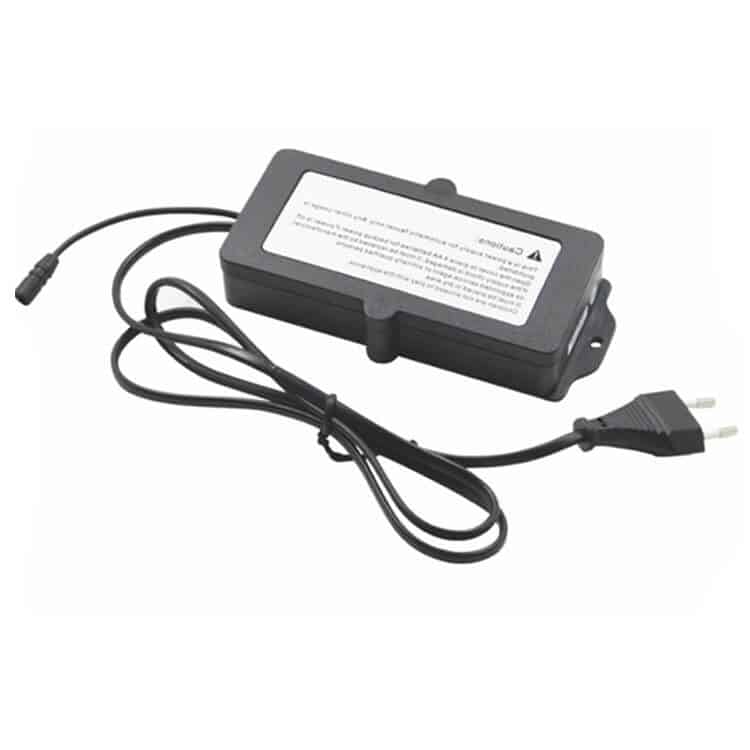
DC Battery type
DC is used to refer to an electric current that always flows in the same direction. DC is an abbreviation for ‘direct current’.
For DC type touchless faucet, it is using DC power with batteries. It is also called battery sensor faucet, battery operated touchless faucet,battery powered sensor faucet and battery operated automatic faucet
The battery operated touchless faucet has a battery holder. Inside the battery holder, there are always 4xAA alkaline batteries in 6V. It gives the electricity power to the sensors and solenoid valve working.
Batteries shall last approximately 3000 times/month for one year at least. Battery replacement is easy, just open the battery box cover and put the new alkaline batteries into the box. Notice: please take care of the battery polarity.
Normally the DC type touchless faucets are a little cheaper than the AC type touchless faucets.
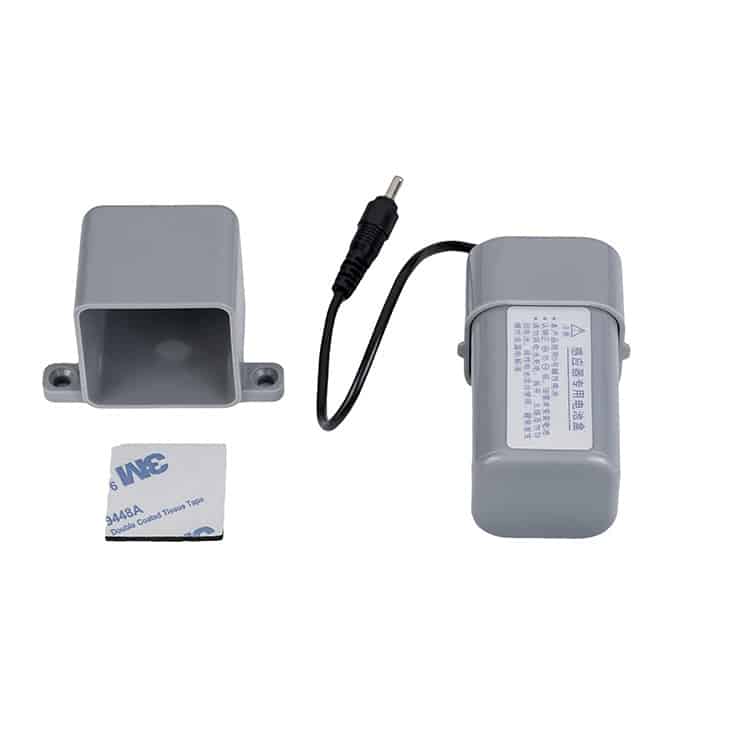
AC adapter and dc battery type
This type of touchless faucet has an AC adapter and DC battery type. Normally it uses AC electricity to work. Once the AC electricity power is not working, it activates the DC battery power to work.
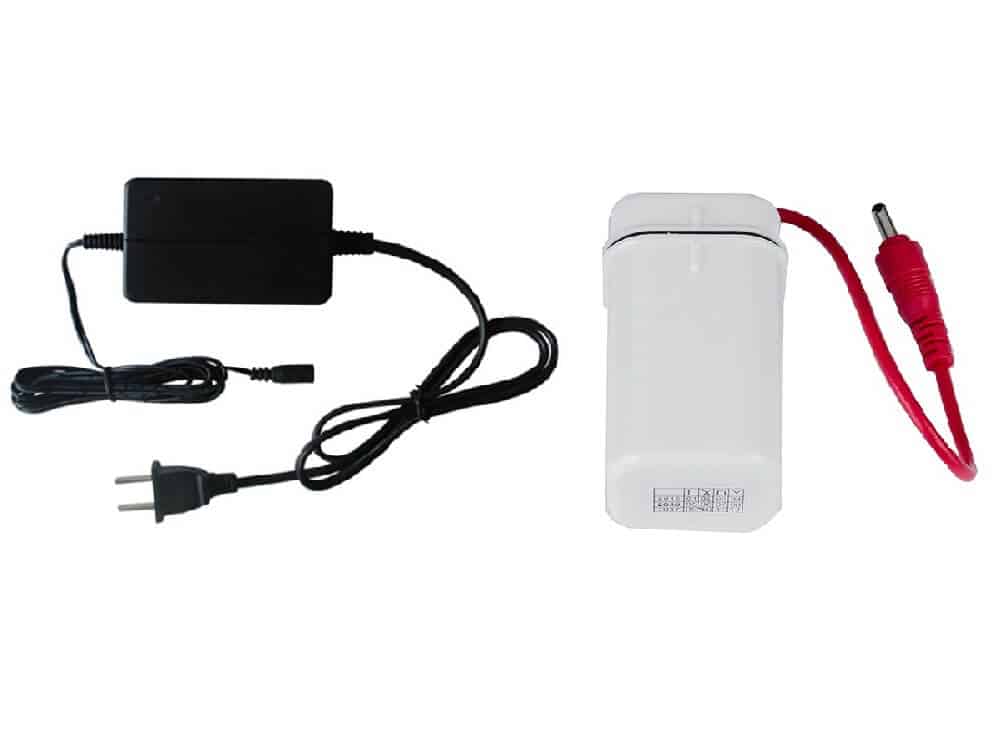
Touchless faucet battery replacement
If there is a blinking red LED on your tap, this indicates that the batteries are low and need replacing. It is easy to change the battery in a touchless faucet. The most important is we need to find where are the batteries. Finding the batteries, follow the steps to replace the correct batteries. You should already read a lot on the internet to teach you how to replace touchless faucet batteries. Below I would like to share with you more information for battery replacement in different sensor taps.
Two types of batteries in a touchless faucet
Normally there are lithium batteries and alkaline batteries used for touchless faucets. Lithium batteries, as opposed to alkaline, are capable of giving off a strong energy surge after a long period of low discharge. Alkaline batteries provide good, long-term power, but they lose strength over time. Simply lithium batteries last a long time using but they are expensive. Alkaline batteries with shorter usage but they are cheaper.
Most touchless faucets use 4AA alkaline batteries because they are common and easy to buy in the market and replace.
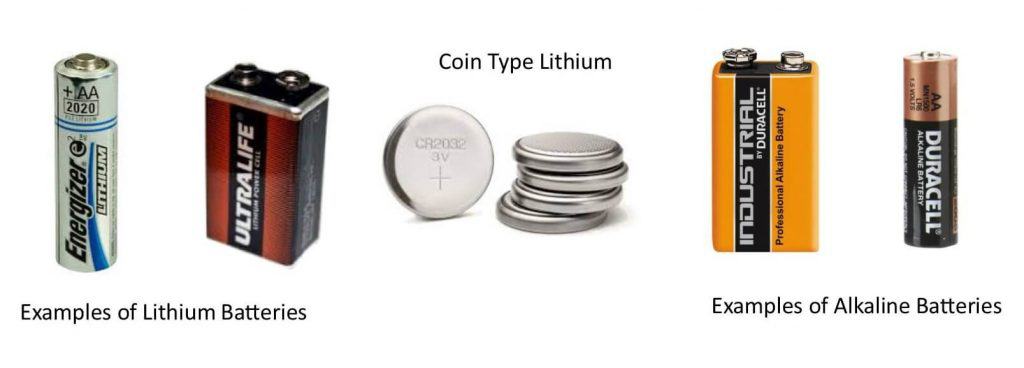
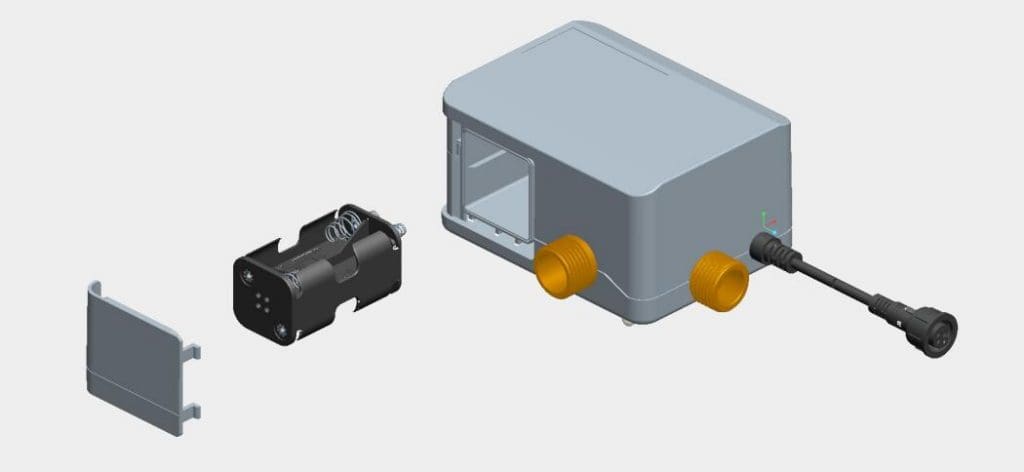
Batteries in the control box and replacement
For most commercial touchless faucets, the batteries are in a battery holder which is placed inside the control box. The control box is always hung on the wall under the countertop. So you need to find the control box first, open or unscrew the screws from the cover. The battery holder is a rectangle small box. Once you find it, pop open or unscrew the lid on the battery box and remove the batteries.
Replace the old batteries with the new ones, noting the correct polarity displayed on the box. Then, fit the cap back onto the battery box. Make sure that the cable is free from obstructions.
Batteries in the battery box and replacement
For some touchless faucets, the batteries are in a battery box separately outside hung on the wall or put somewhere in the cabinet beneath the sink.
So you need to find the battery box first, open or unscrew the screws from the cover. Remove the old batteries and replace them with new batteries. Noting the correct polarity displayed on the box.
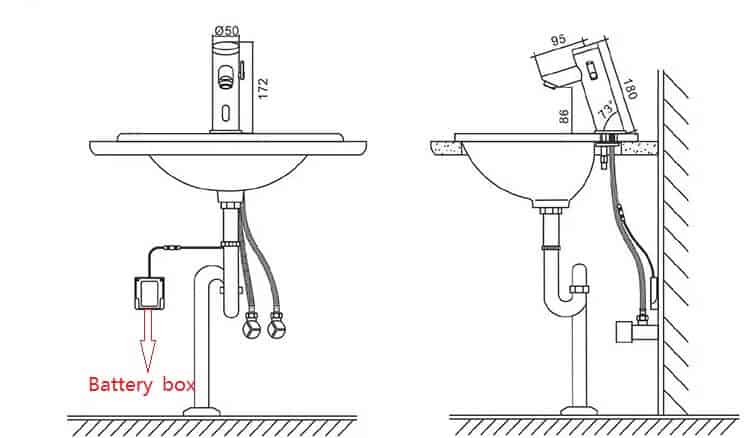
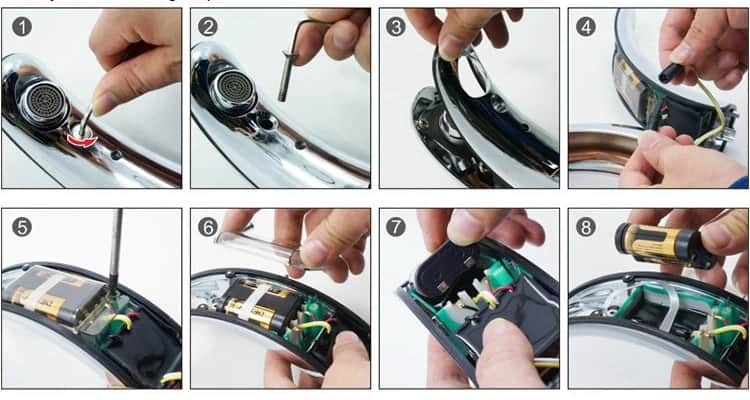
Batteries in the touchless faucets
For some touchless faucets, the batteries are in the touchless faucets, we call these all in one touchless faucet. Like our wall mount sensor faucet or some touchless bathroom faucets.
You need to follow the touchless faucet manual step by step to find and replace the batteries. It is also easy to replace the batteries by following the manual.
How Long Do Batteries Last In A Touchless Faucet?
The lifespan of the batteries in a touchless faucet is dependent on the size and type of battery the faucet requires. It also depends on how often the touchless faucet is used. However, touchless faucet batteries typically last about one to two years on average, based on approximately 3000 times/month.

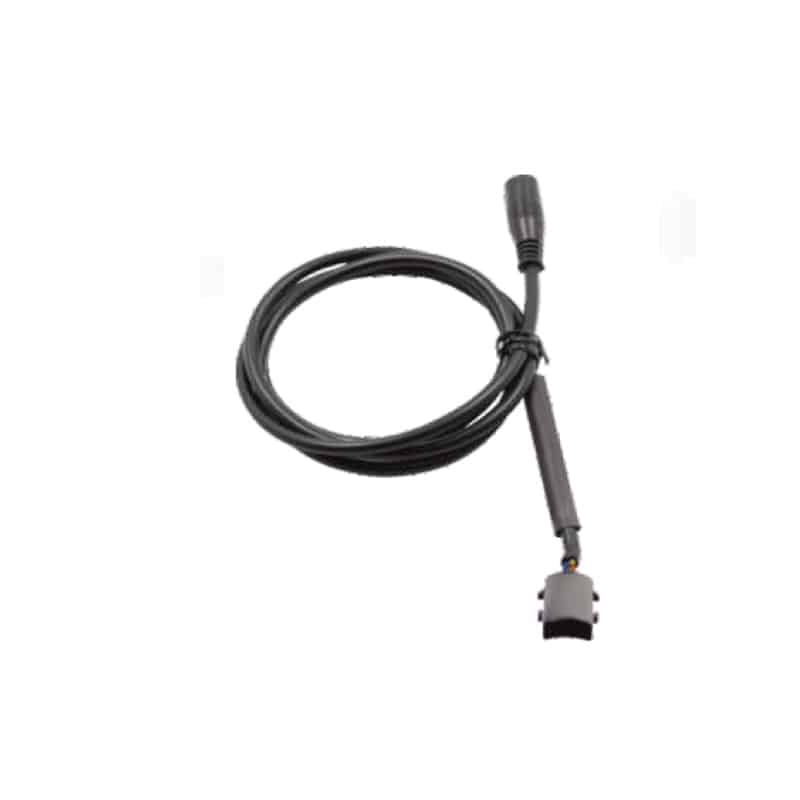
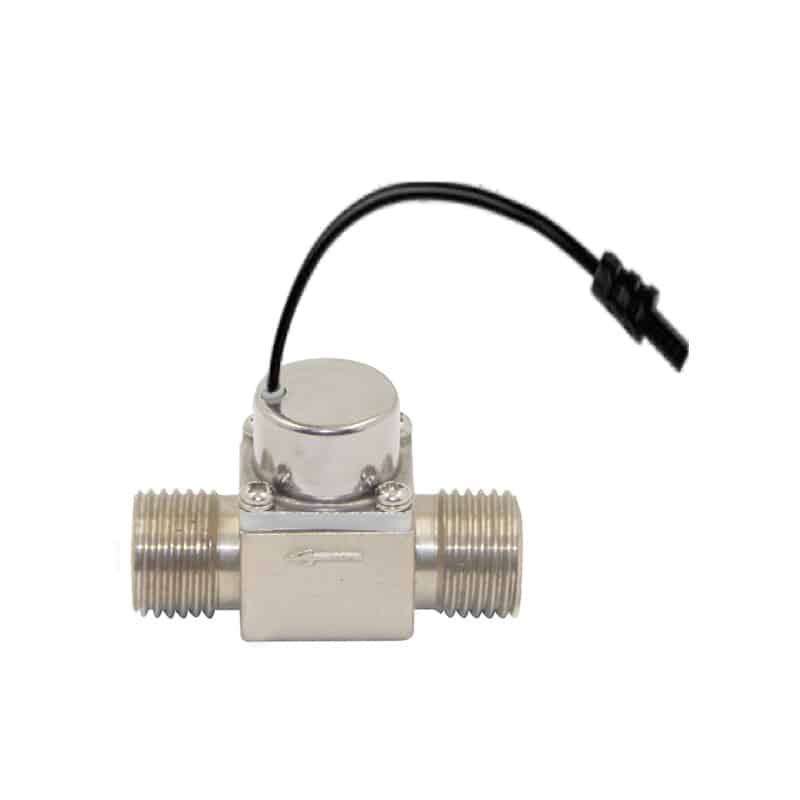
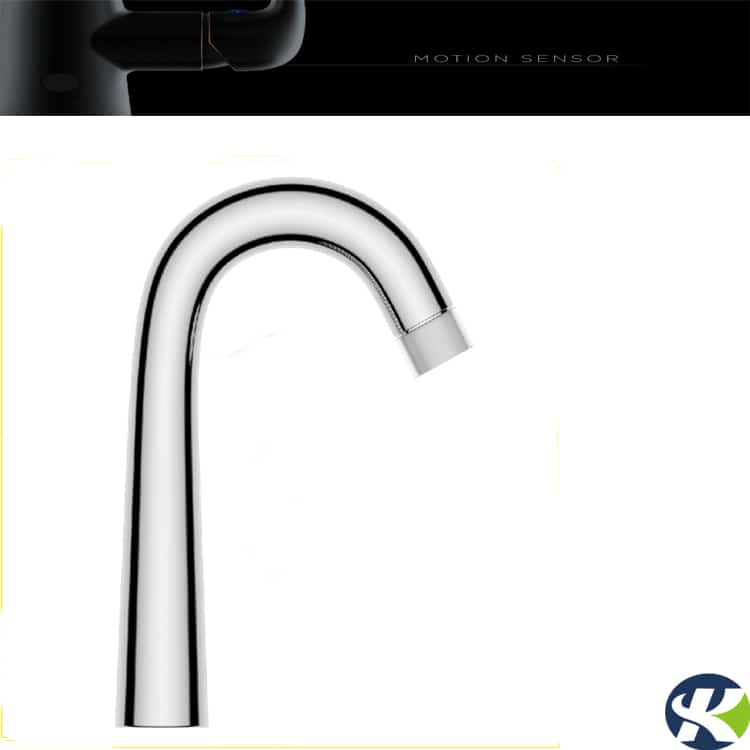
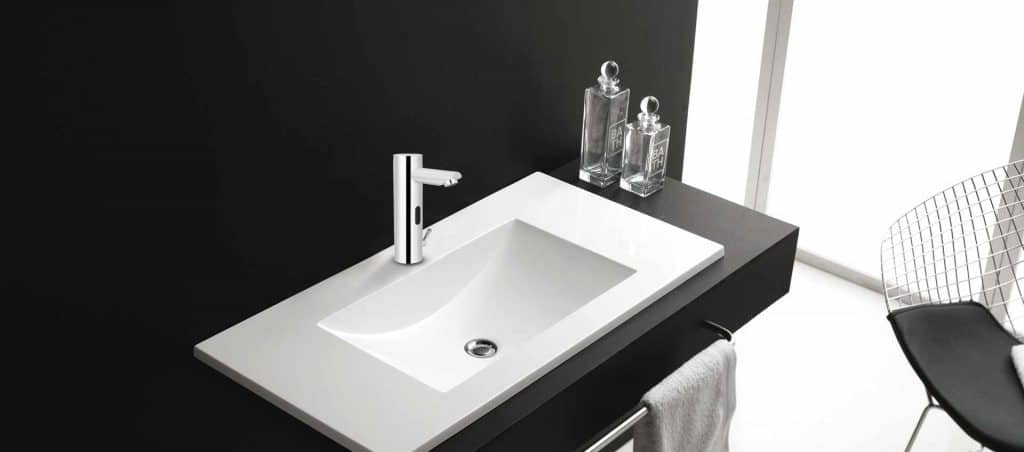
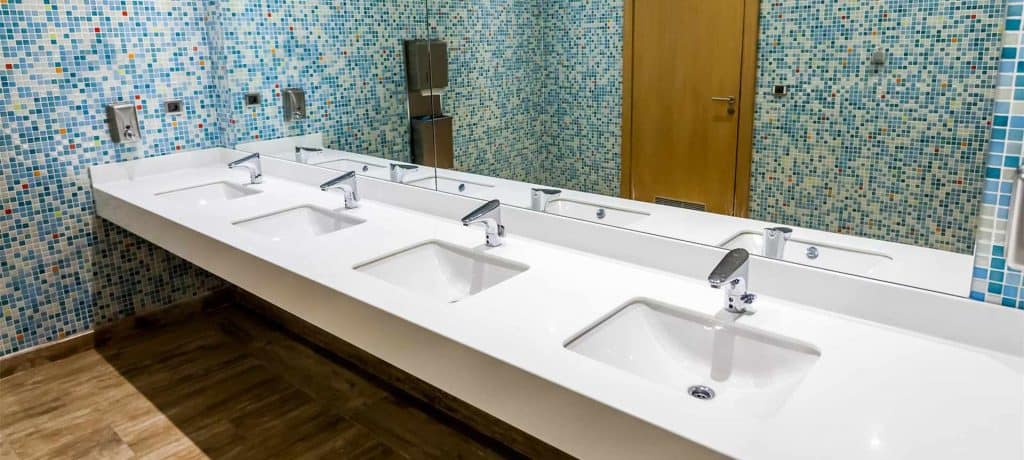

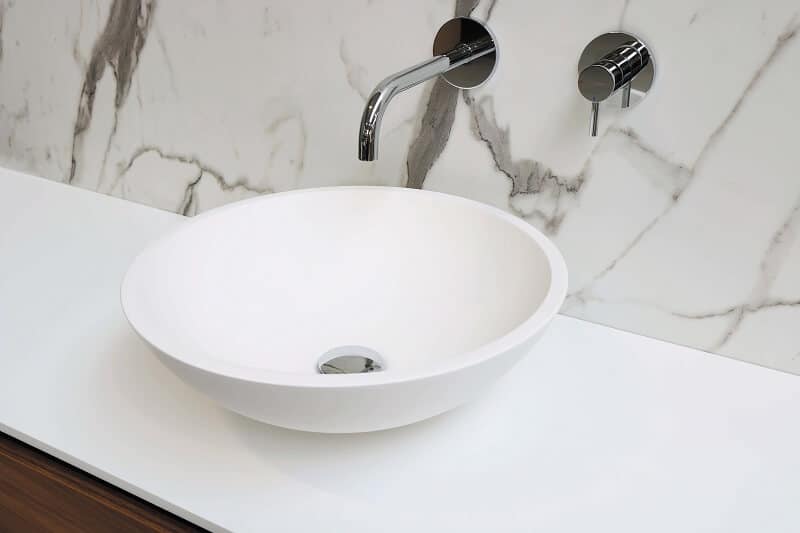
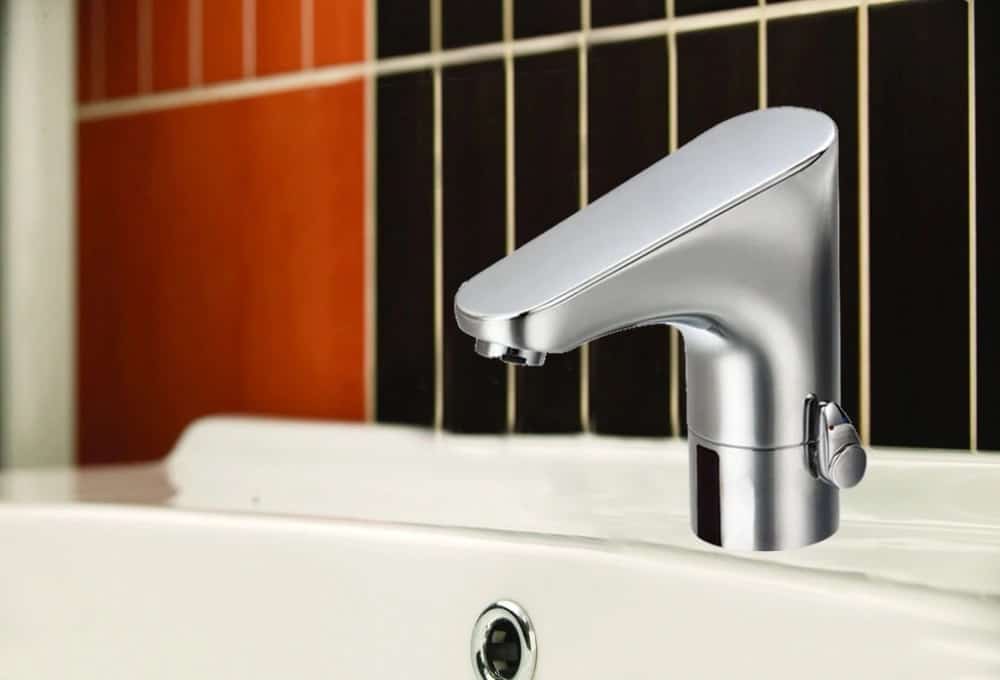

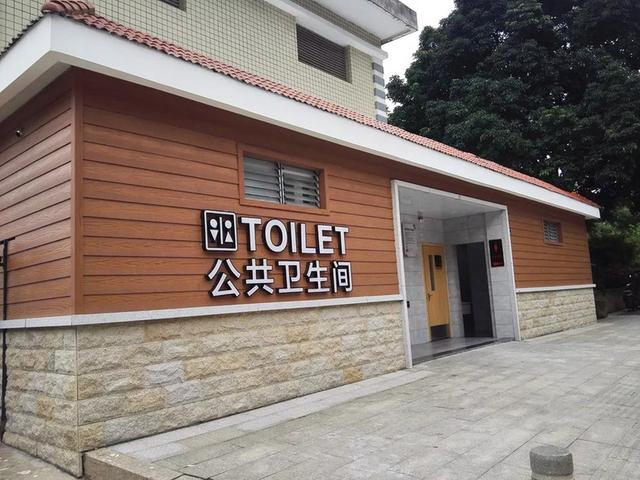


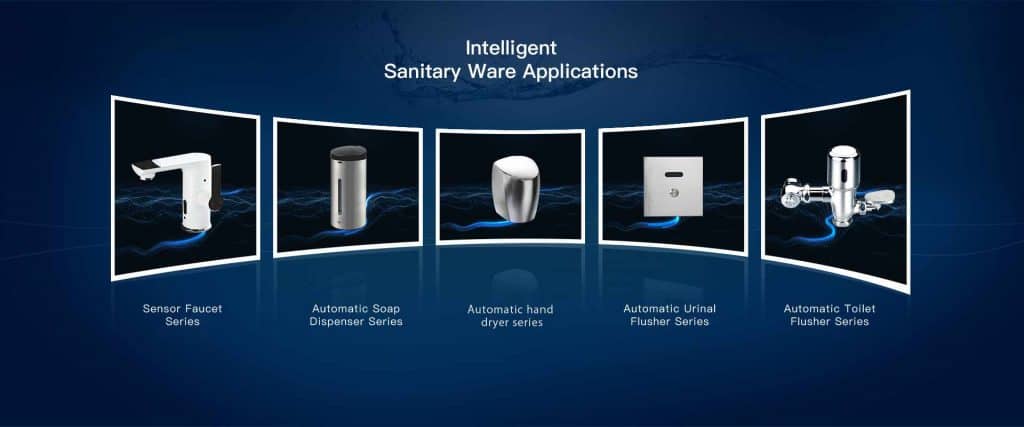
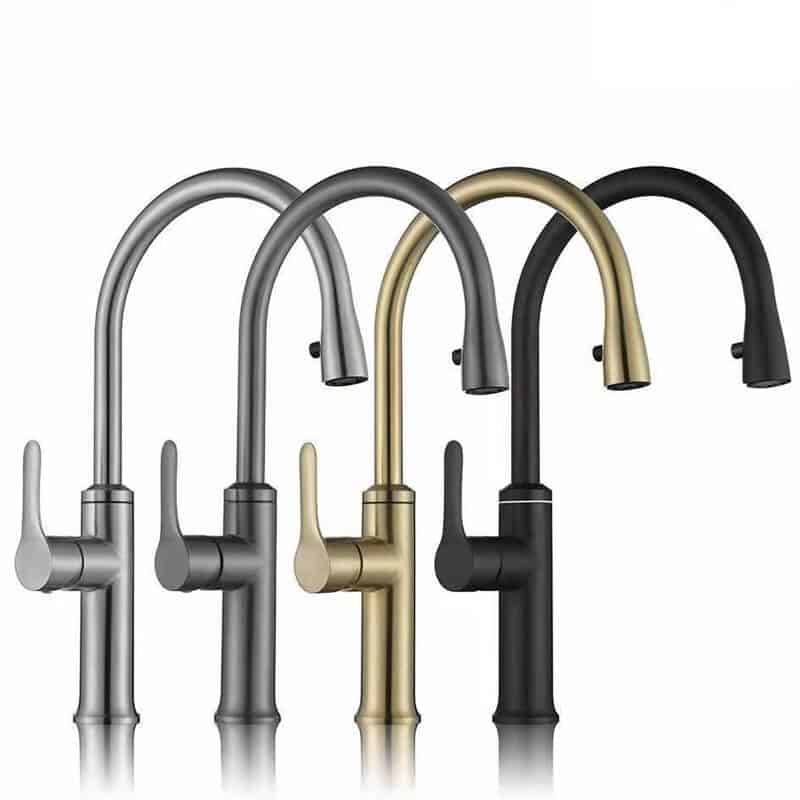
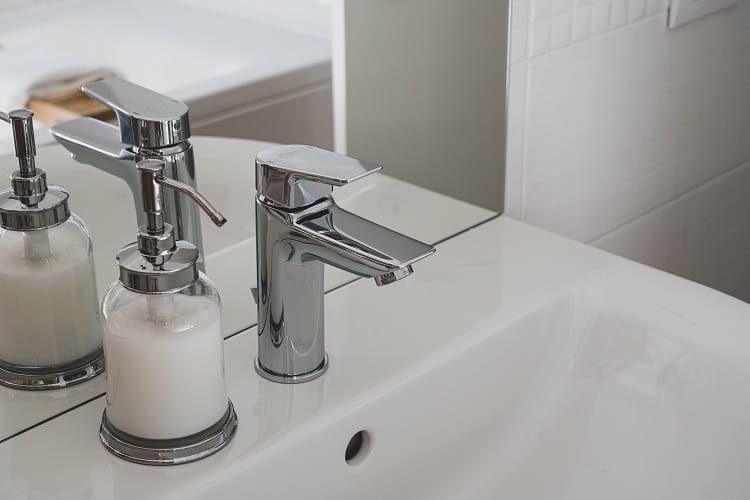
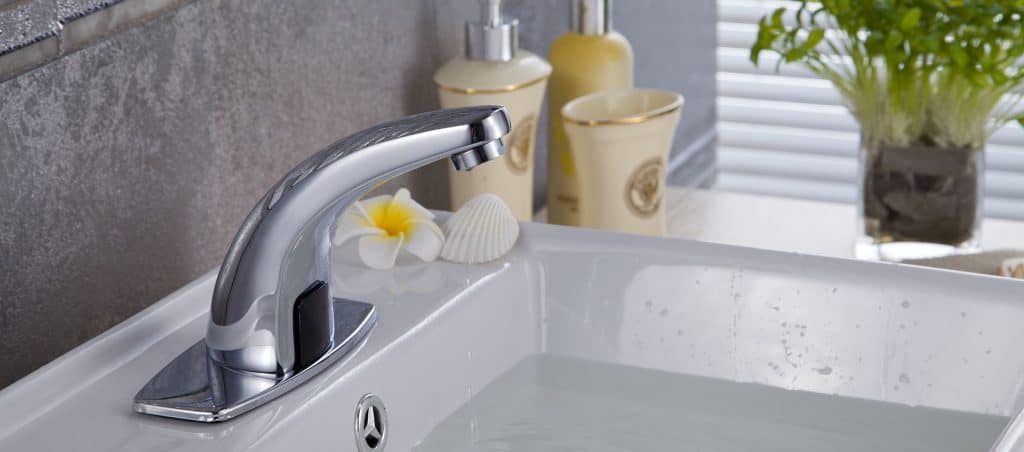
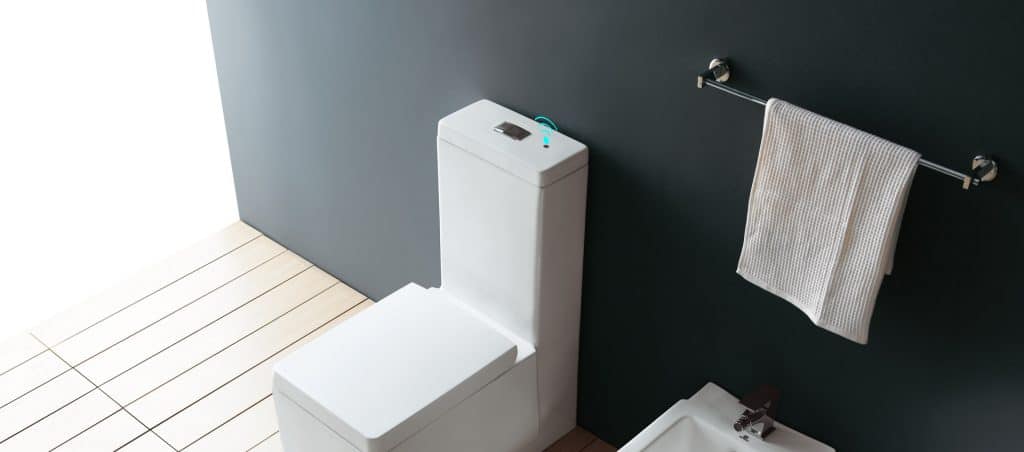
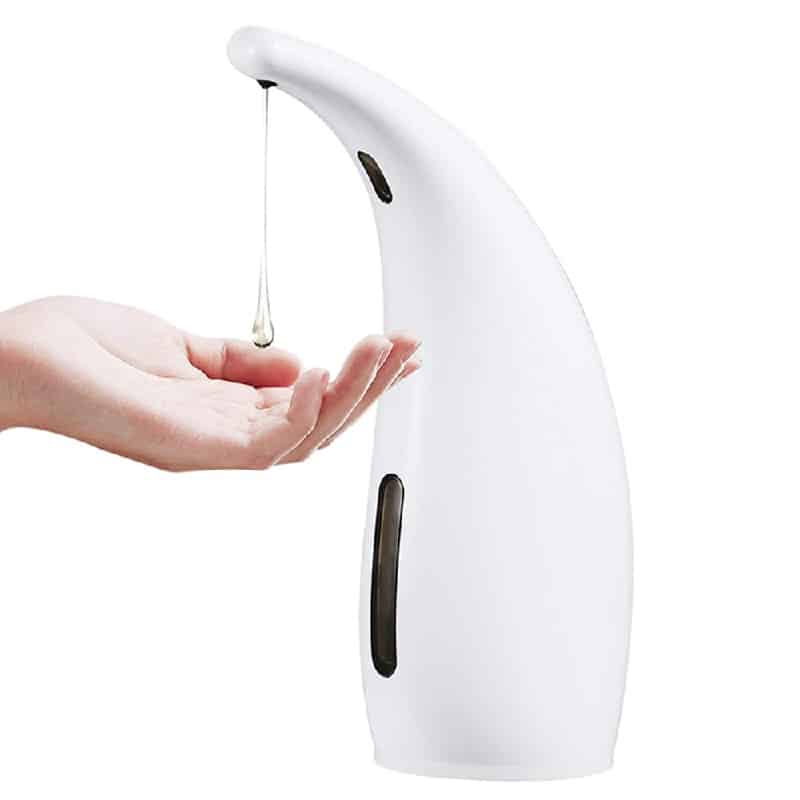


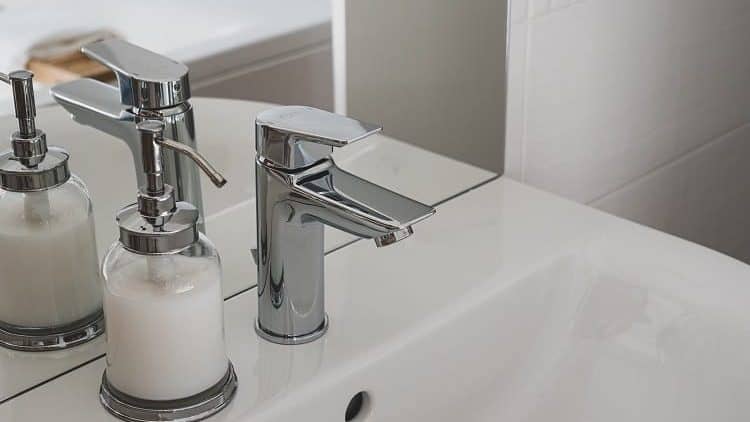


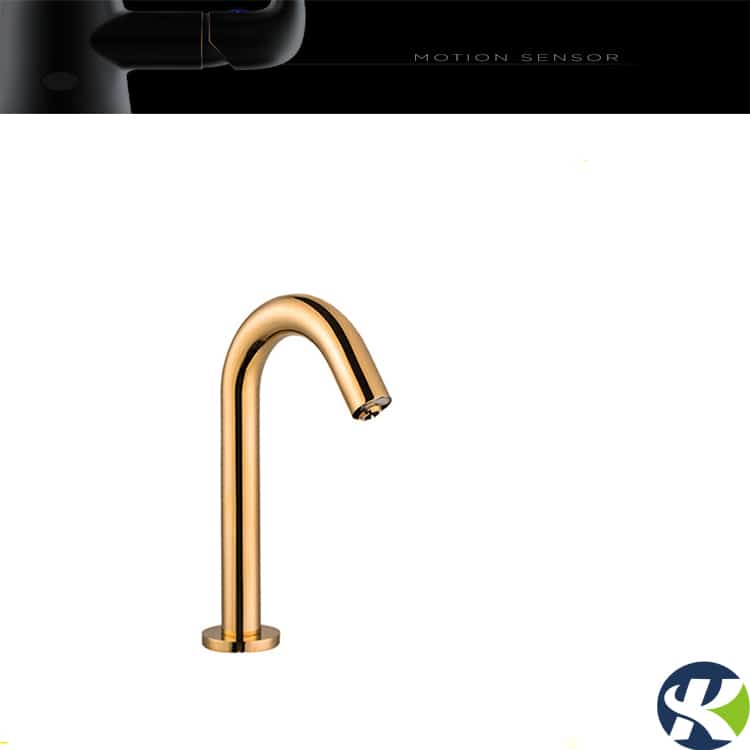
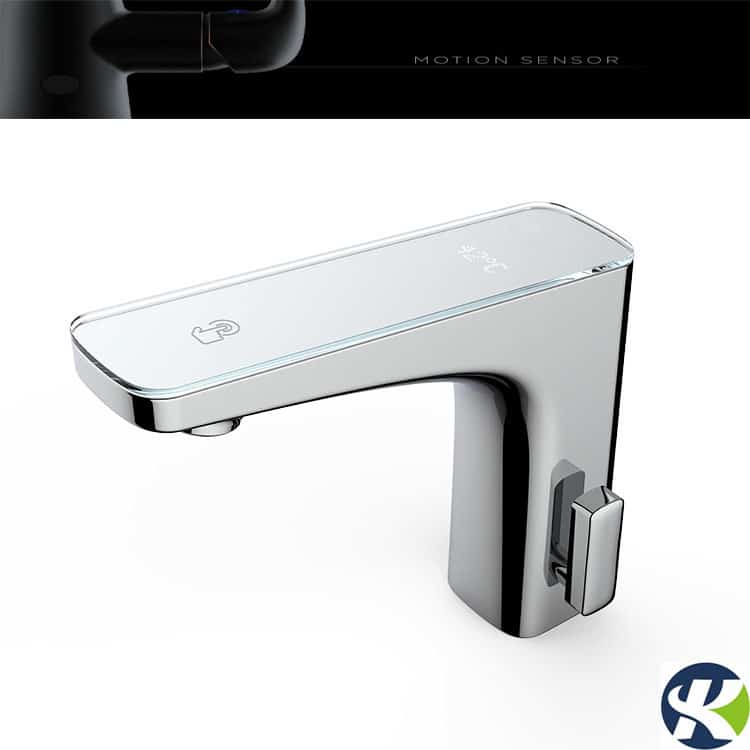
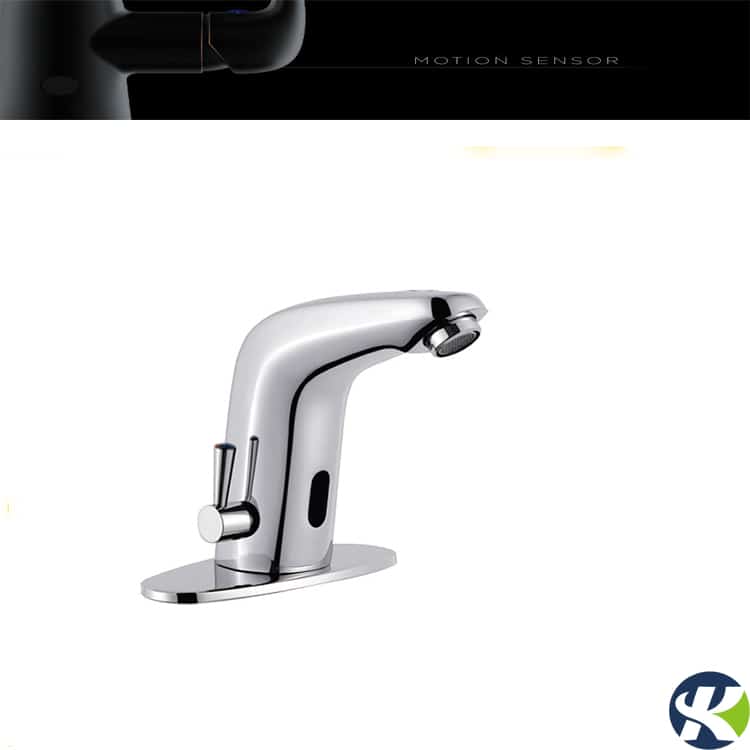
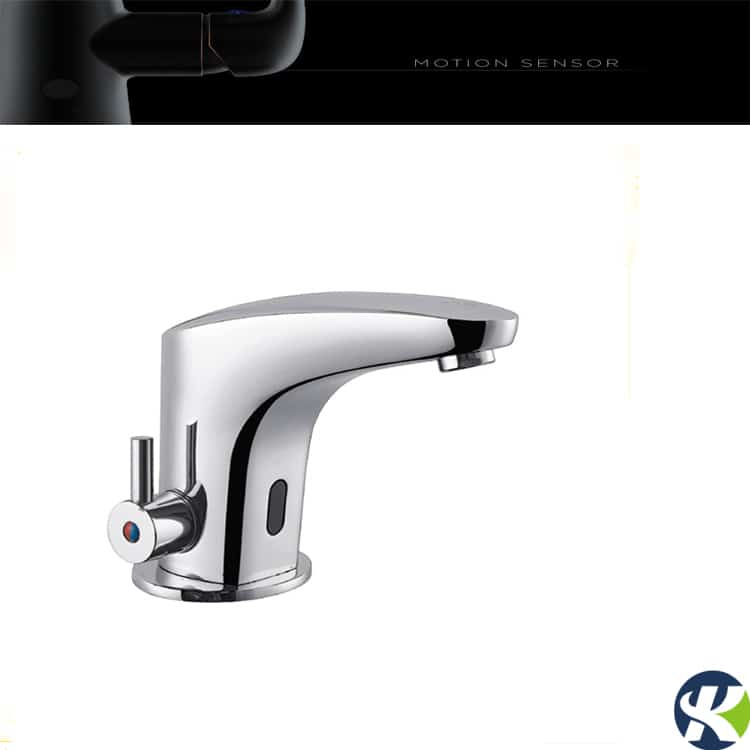
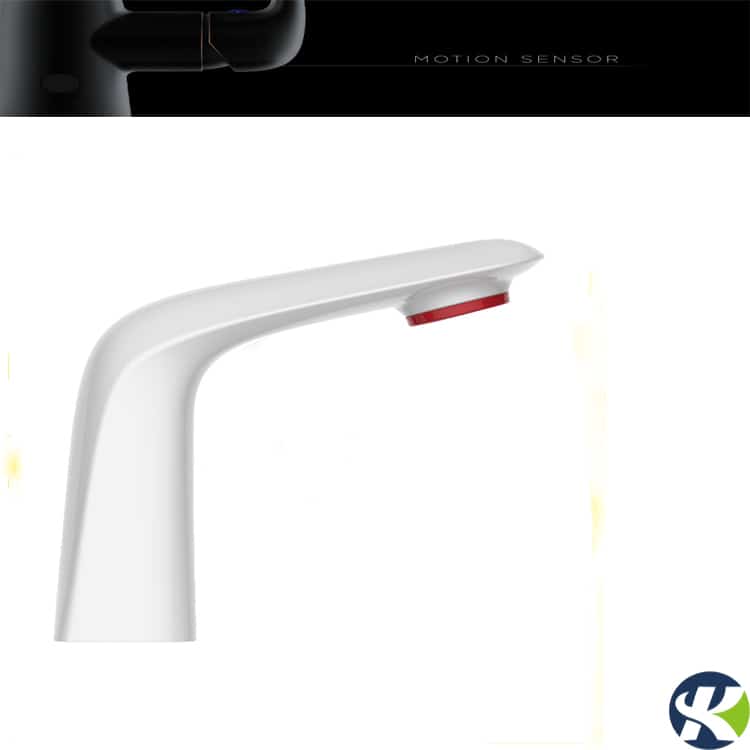
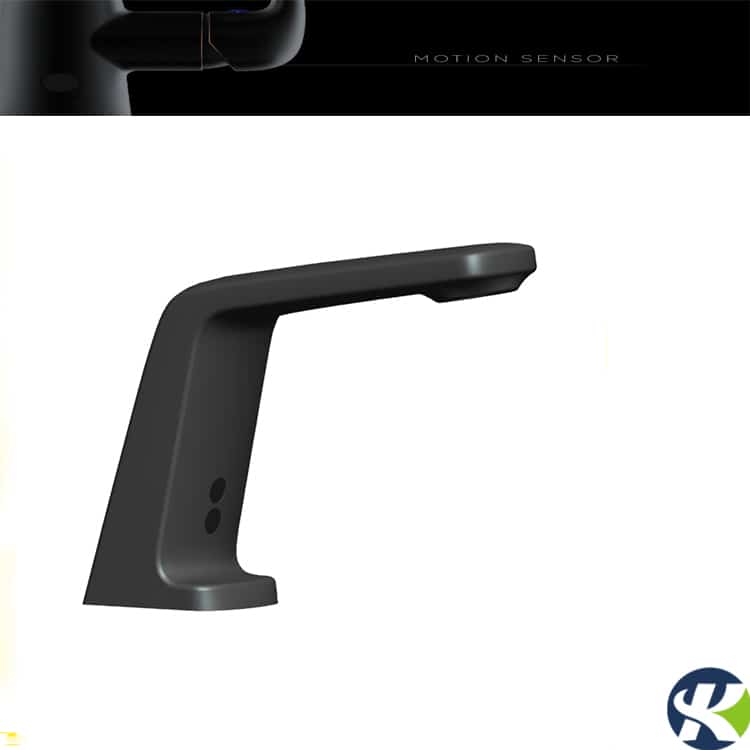
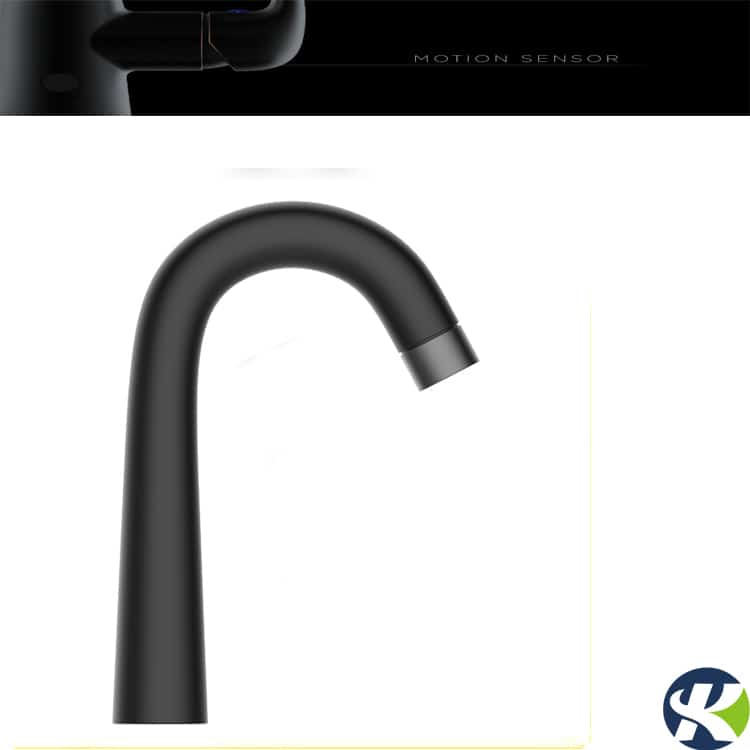
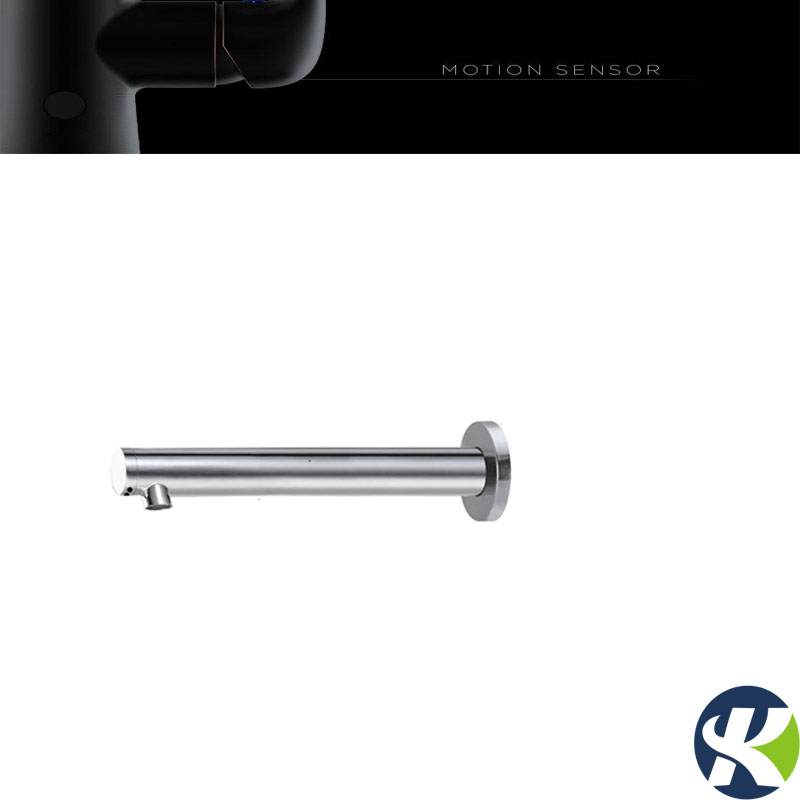
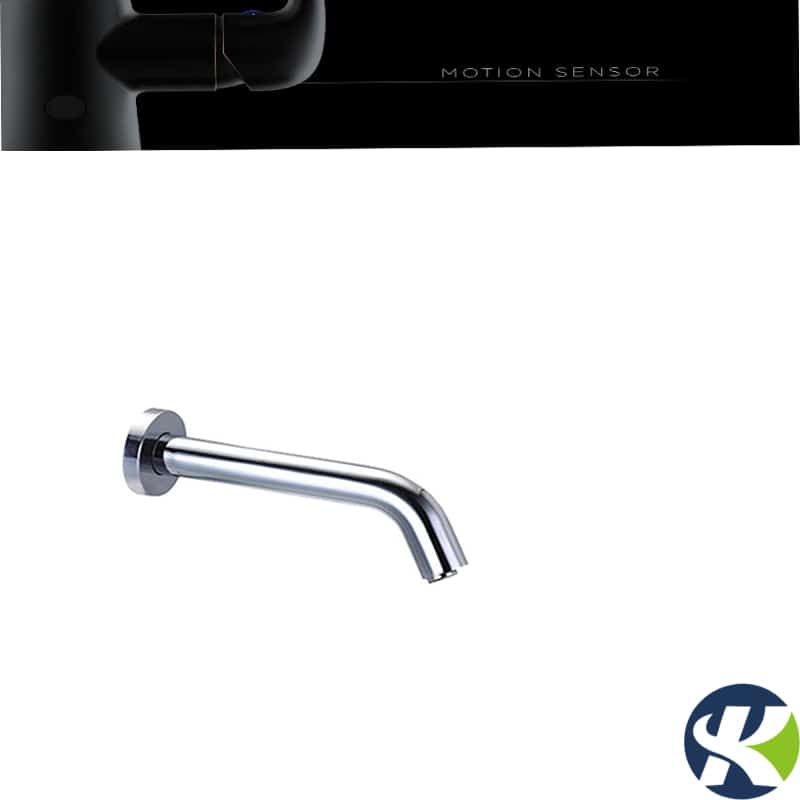
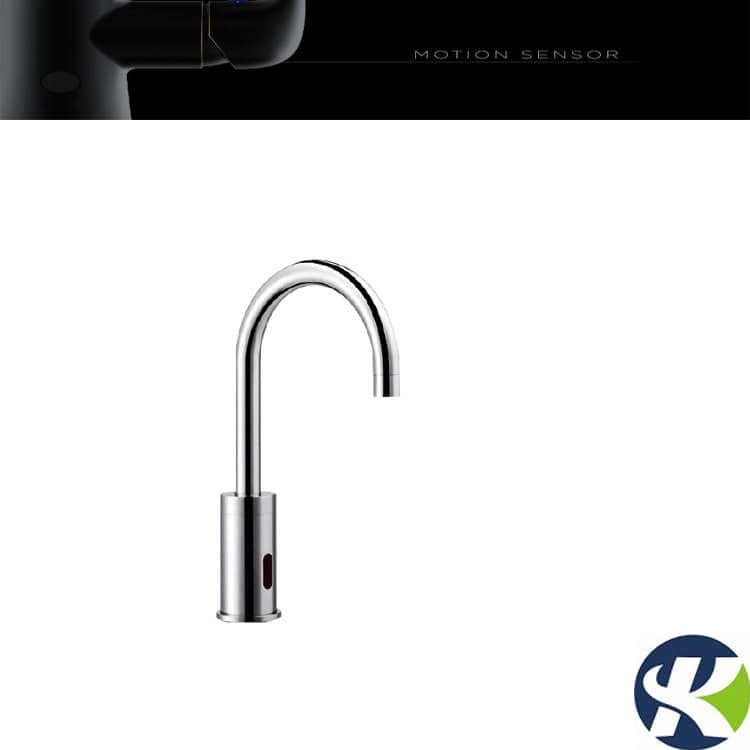
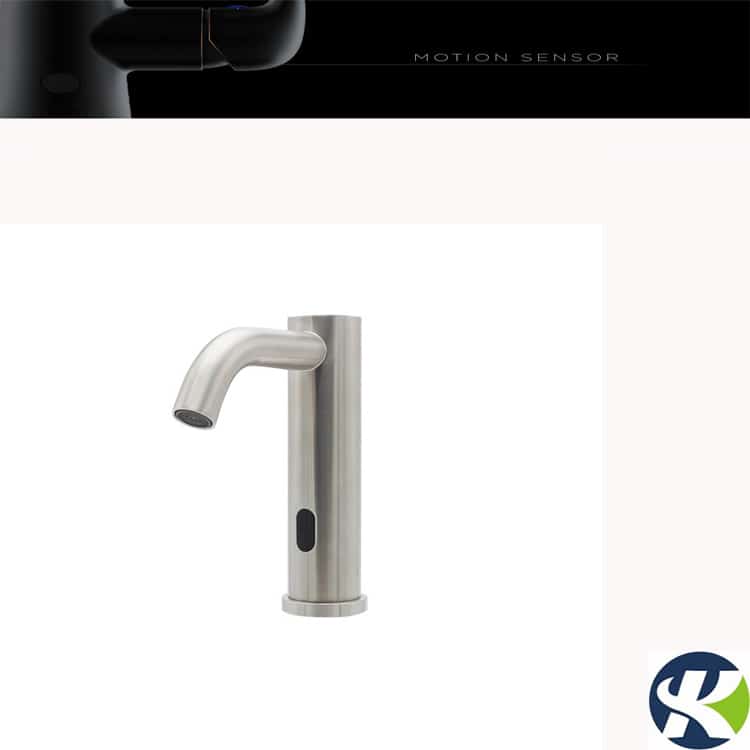
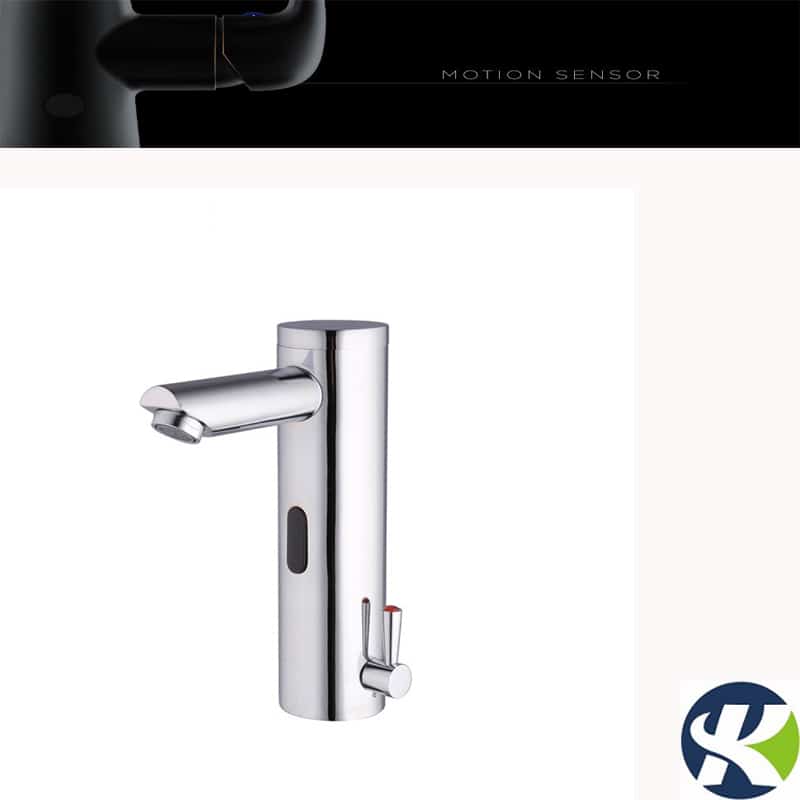
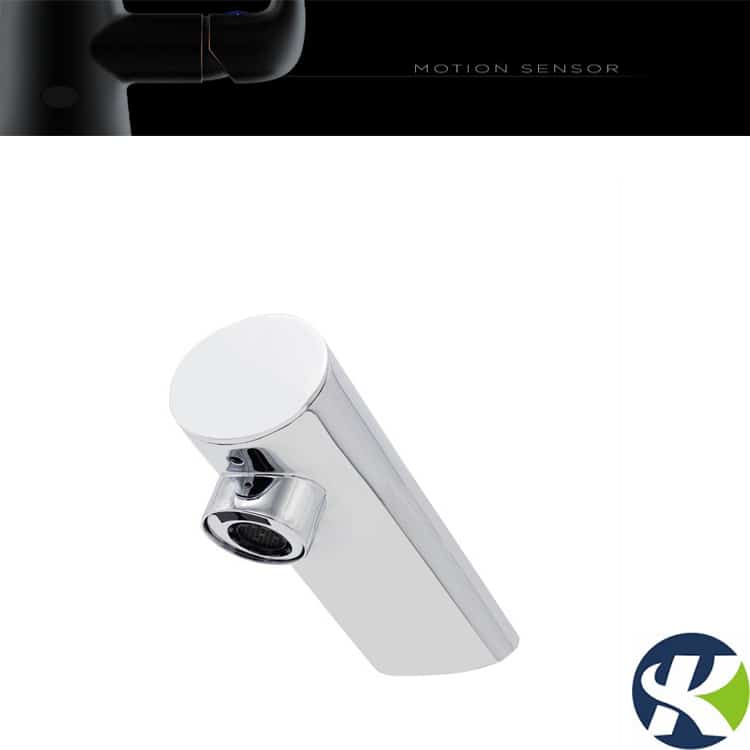
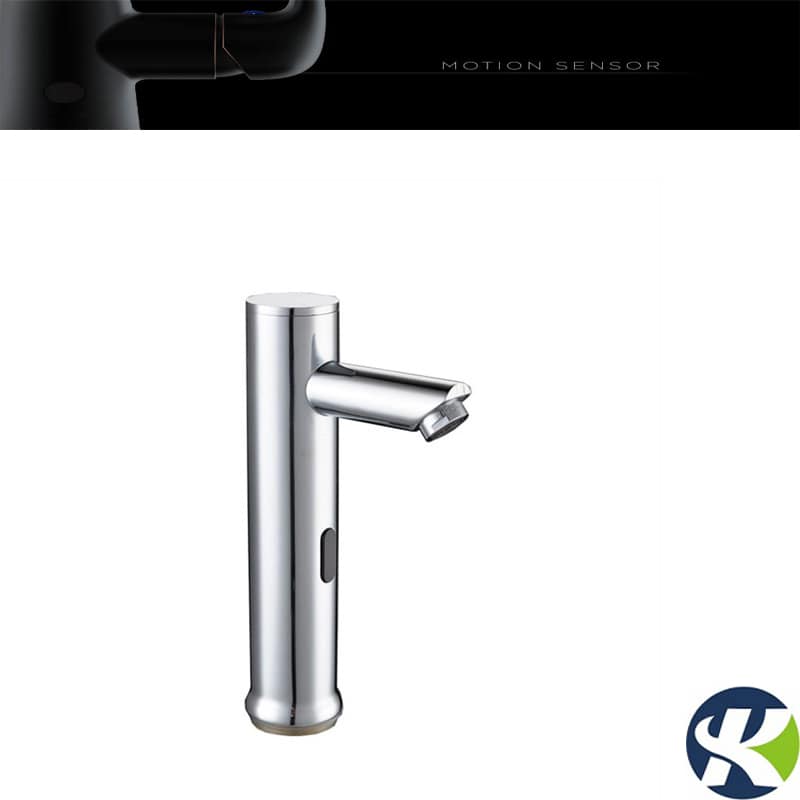
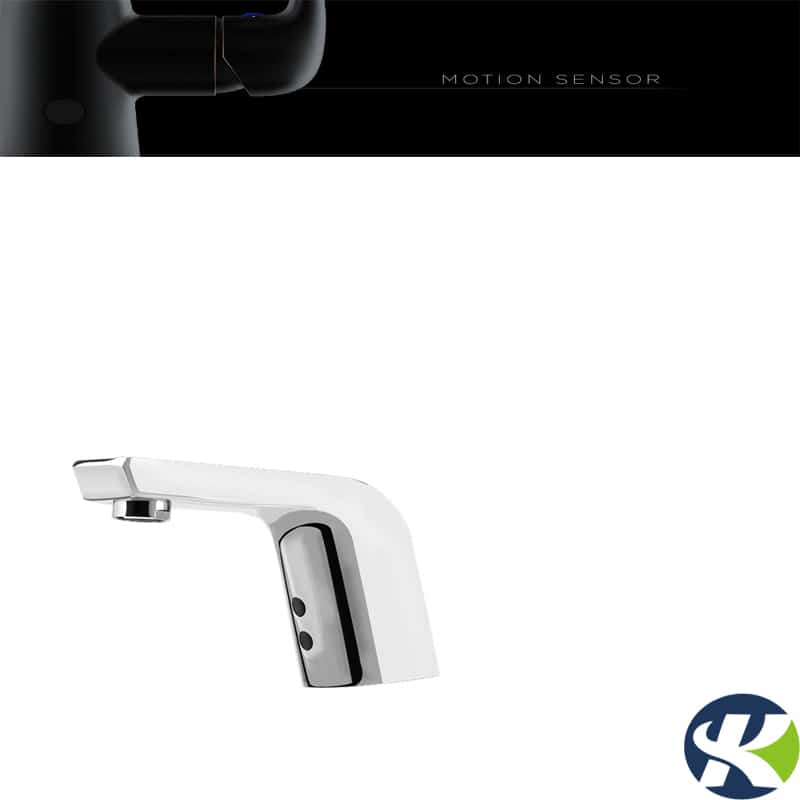
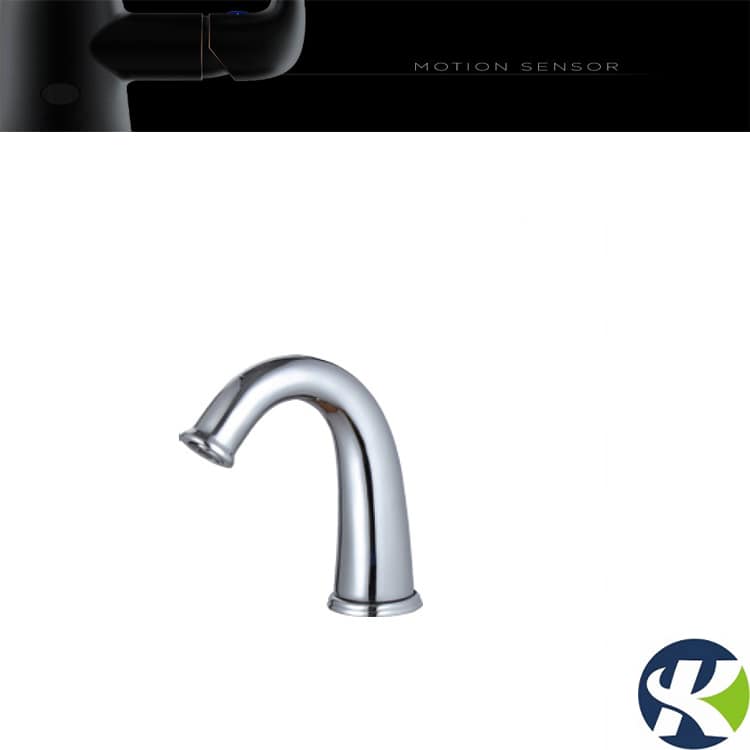
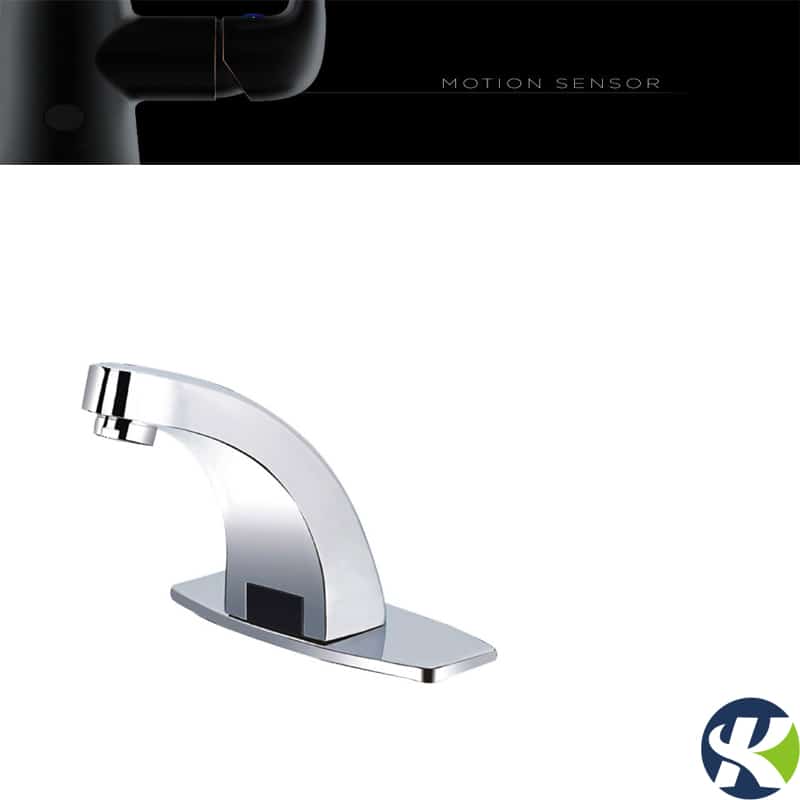
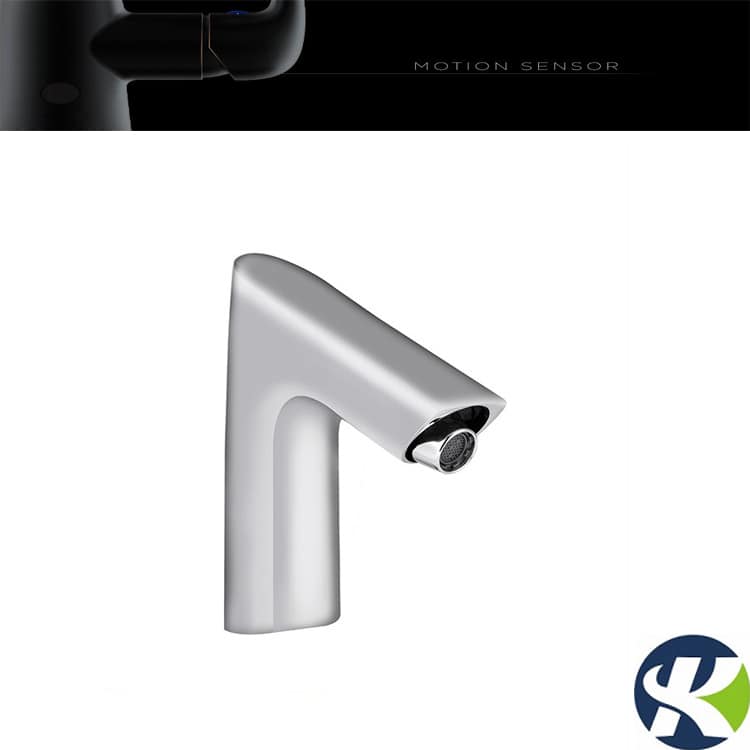
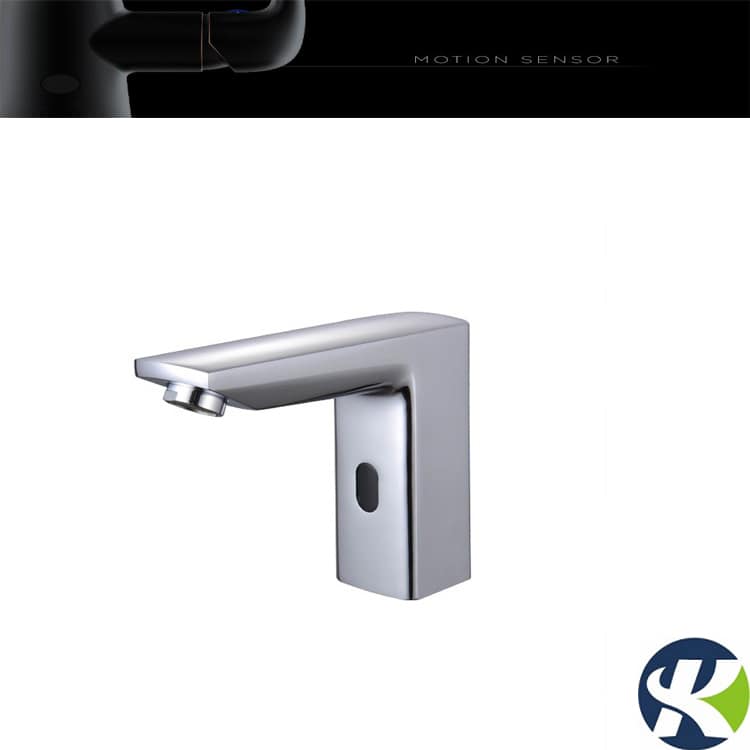
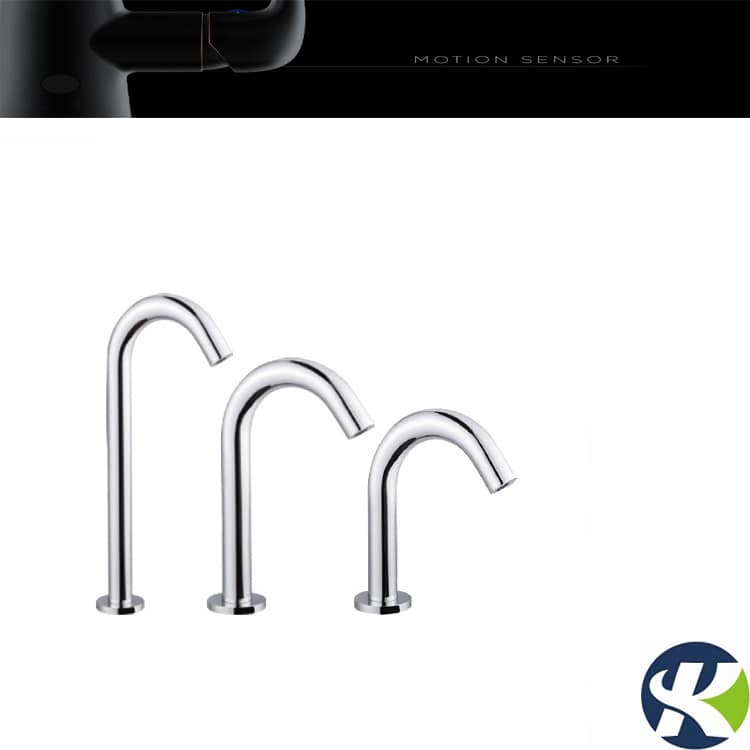
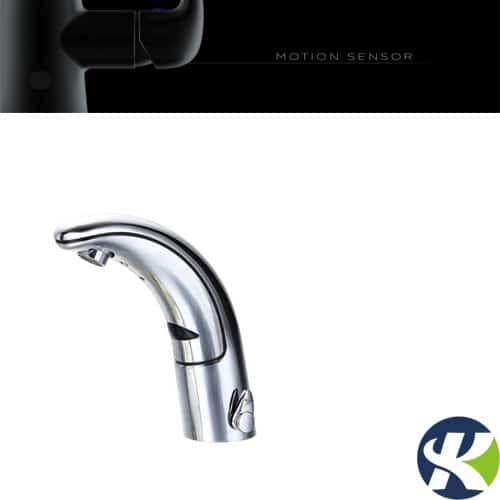
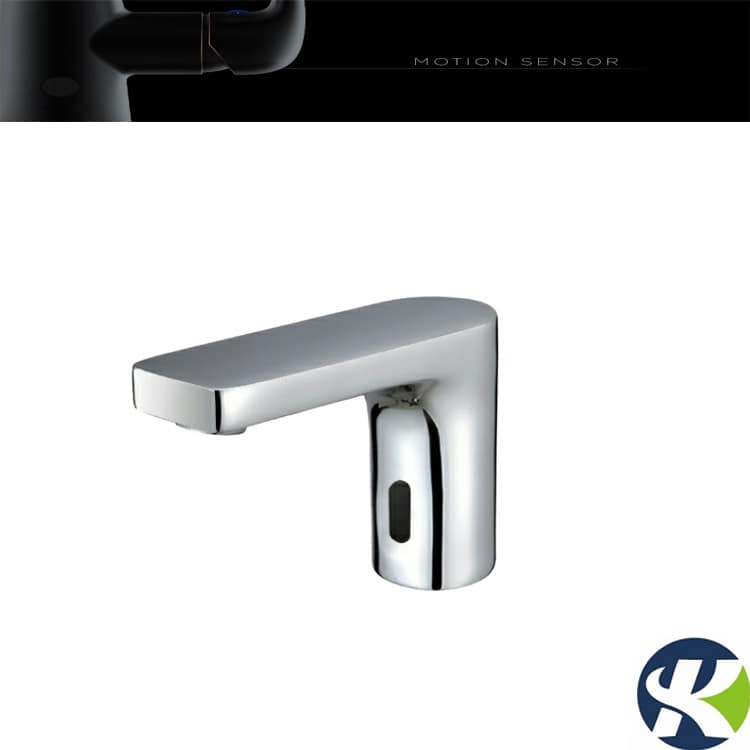
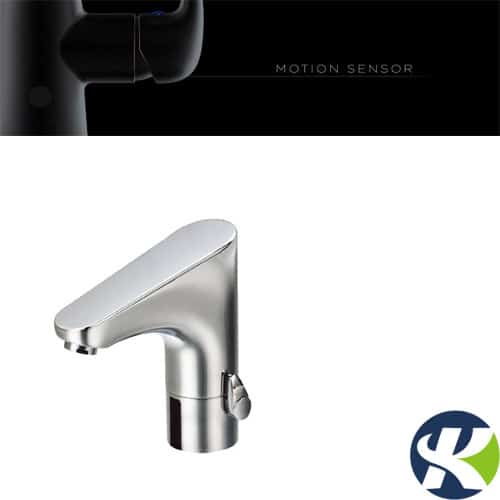
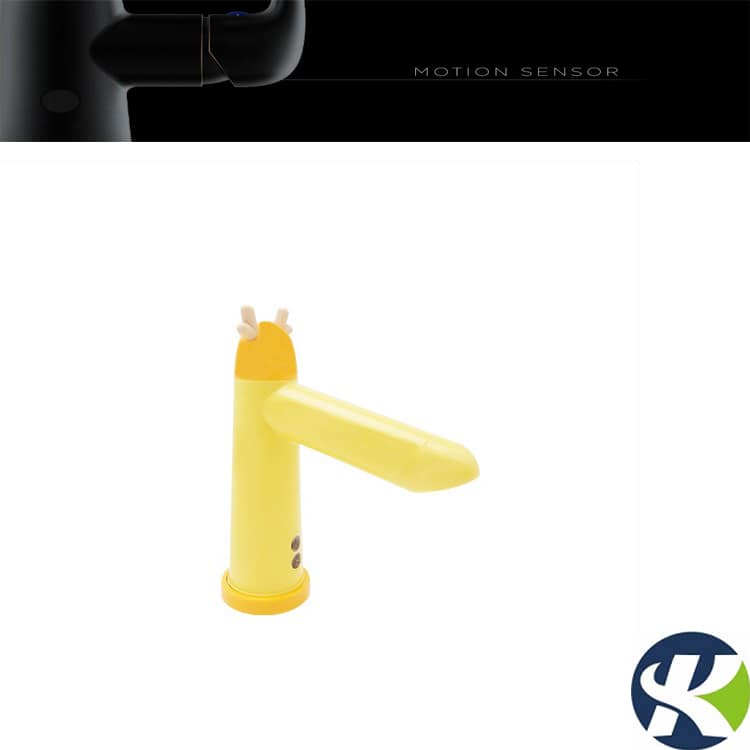

13 thoughts on “Do Touchless Faucets Need Electricity?”
Comments are closed.